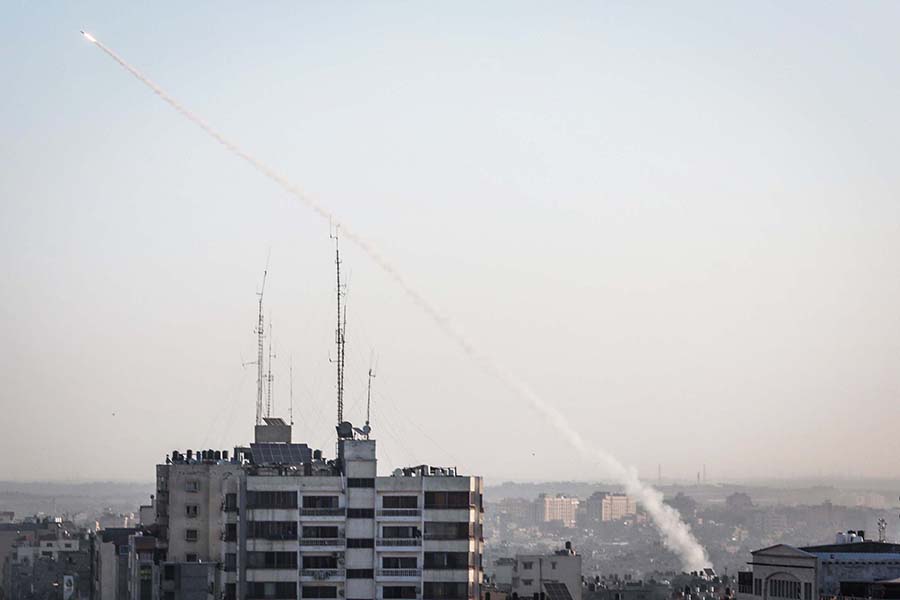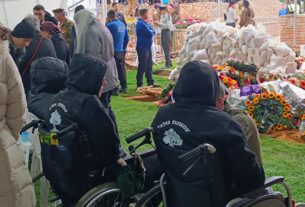{Originally posted to the JNS website}
Once again, Israel and Gaza have briefly traded rocket fire only to quickly deescalate. However, this time Hamas mostly stayed out of the fighting, leaving Palestinian Islamic Jihad (PIJ) to fight Israel alone. This shift suggests that the rounds of violence may continue without provoking another war, and there is a window of opportunity for the United States to help prevent PIJ from serving as a potential spoiler to this precarious balance.
<!–
Publisher #16: JewishPress.com
Zone #113: Comment Banner / (02) / News
Size #15: Banner 468×60 (Comments and Mobile) [468×60]
–> ‘); _avp.push({ tagid: article_top_ad_tagid, alias: ‘/’, type: ‘banner’, zid: ThisAdID, pid: 16, onscroll: 0 });
After Israel assassinated PIJ’s senior commander in Gaza, Baha Abu al-Ata, PIJ launched hundreds of rockets into Israel. Al-Atta and PIJ had been regularly launching attacks into Israel that sought to undermine indirect talks between Israel and Hamas for a long-term ceasefire. Israel retaliated with its own rocket fire against PIJ targets, but the escalation again ended with a ceasefire.
Israel and Hamas remain fierce adversaries, but conditions over the past few years have disincentivized either from launching another war on the scale of their 2009, 2012, or 2014 conflicts. Hamas mismanagement of Gaza has caused a humanitarian and economic disaster, and another war in Gaza would threaten their ability to govern. For its part, Israel no longer needs to launch regular offensives because of the Iron Dome missile air-defense system’s remarkable interception rate.
Instead, there have been numerous, short tit-for-tat escalations where both sides launch barrages of rockets. Hamas has initiated several of these escalations to leverage Israel for concessions to ease Gaza’s dire conditions.
However, PIJ has also provoked several of these outbursts independent of these concerns. Like Hezbollah to Israel’s north, PIJ is an Iranian proxy and therefore much of its finances, weaponry, and decision-making can trace their routes to the regime in Tehran. Due to this close connection, PIJ boasts a large missile arsenal with some technical capabilities greater than Hamas, such as the new 300-kilogram missile it recently launched at Israel.
Regardless of who instigated the violence, Israel has held Hamas responsible as the organization in charge of the Gaza Strip. In response to past PIJ provocations, the Israel Defense Forces has also responded against Hamas targets to coerce them to crackdown on the PIJ militants.
Through ceasefires at the end of each bout, Israel has allowed Qatar to make monthly payments to Gaza, expanded Gaza’s fishing zone and increased the number of Gazans that can enter Israel to work. Meanwhile, Israel and Hamas have been conducting indirect negotiations for a long-term ceasefire.
Hamas therefore faces a conundrum: It does not want war, but it also wants to avoid the appearance of cooperation with the Israelis by limiting PIJ operations. In the past, this has allowed PIJ to drag Hamas into fighting.
This time, Hamas mostly avoided joining the violence, even after 30 Palestinian died, including a Hamas member. The decision by Hamas’s leadership to limit their involvement in this round was easier because Israel had avoided targeting their militants or infrastructure.
Hamas operatives did eventually launch rockets towards Beersheva that the Iron Dome intercepted, but it remains unclear whether operatives acted independent from Hamas’s leadership. Israel responded against Hamas targets only after this incident.
Hamas remains responsible for preventing attacks emanating from Gaza, but Israel’s decision to differentiate between Palestinian militant groups may decrease the likelihood that Hamas’s leadership joins future PIJ provocations. At the same time, Hamas remains poised to attack Israel should this balance of deterrence shift and its command and control of militants remains questionable.
Considering these developments, U.S. policymakers can take steps to decrease the likelihood of another war and prepare Israel for PIJ provocations.
The United States should increase its cooperation with Israel on missile-defense technologies that disincentivize an Israeli first strike. Iron Dome has proved an enormous success. While an individual interceptor costs roughly $100,000, this pales in comparison to the damage that a rocket landing in Israel could cause or the destruction of another war brought on by Israel’s inability to defend itself.
However, if Hamas, PIJ, Hezbollah or Iran decides to launch a full-scale war against Israel separately or in coordination, they may have enough firepower to overwhelm Israel’s complicated mesh network of missile-defense systems or seek creative lower-tech means, such as drones. The Department of Defense should cooperate with Israel on mutually beneficial projects that can thwart these unmanned systems.
In addition, instead of completely cutting off Palestinian aid, the United States should push for the U.N. High Commissioner for Refugees (UNHCR) to take over aid work for the Palestinians from the beleaguered U.N. Relief and Works Agency for Palestine Refugees in the Near East (UNRWA). Directing funding towards the UNHCR and other organizations not connected to the current dire situation in Gaza could improve conditions and therefore disincentivize Hamas attacks.
By no means is the current situation sustainable or ideal, and there will not be peace while Hamas remains in power. However, Amreica should take every effort to ensure that PIJ does not spoil this temporary respite from the wars that plagued Israelis and Gazans.
(LTG H. Steven Blum, USA (ret.) is former Deputy Commander of U.S. Northern Command and a participant of the Jewish Institute for National Security of America’s (JINSA) 2015 Generals & Admirals Program. Ari Cicurel is a policy analyst at JINSA’s Gemunder Center for Defense & Strategy)
‘);
_avp.push({ tagid: article_top_ad_tagid, alias: ‘/’, type: ‘banner’, zid: ThisAdID, pid: 16, onscroll: 10 });




